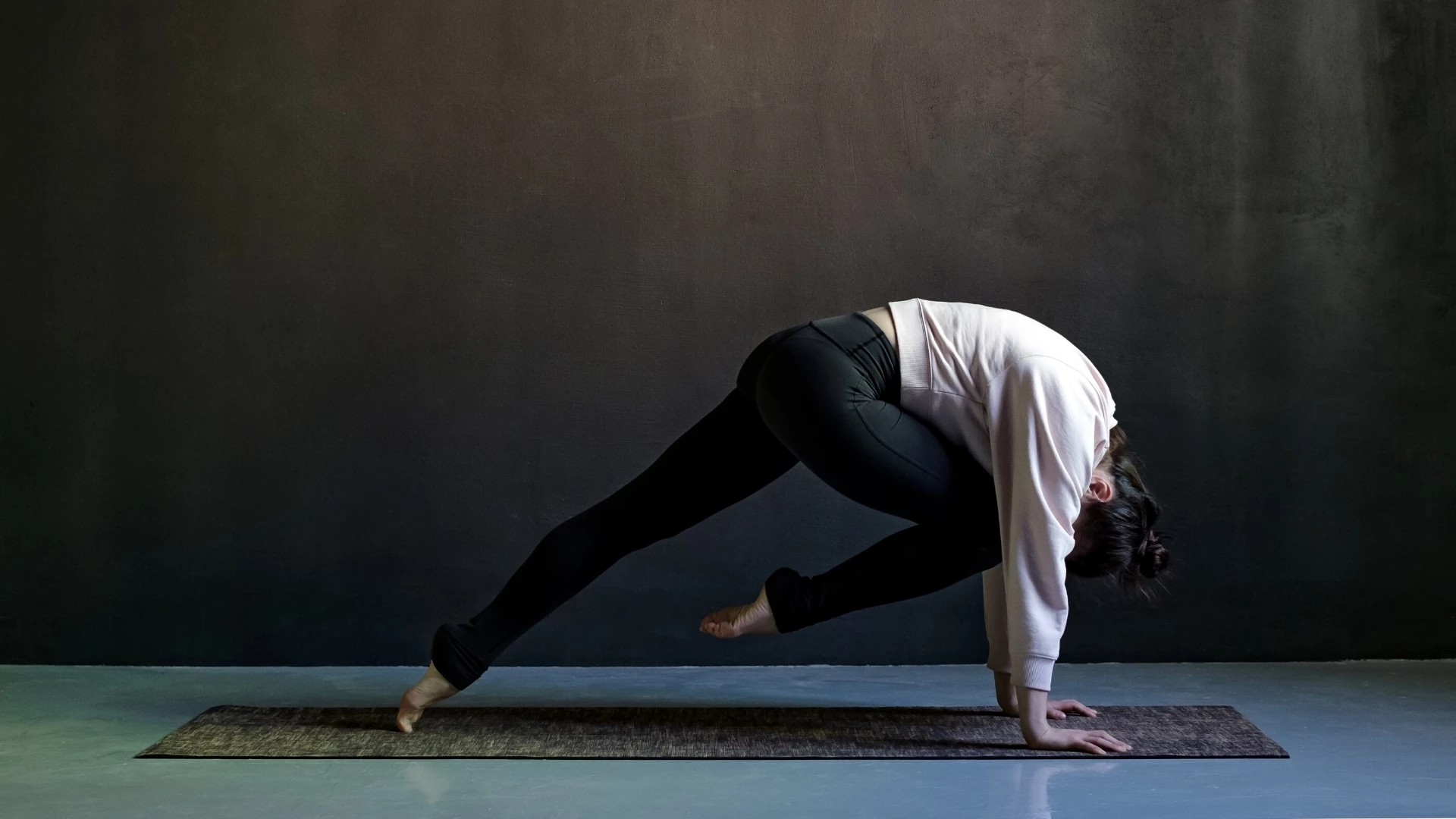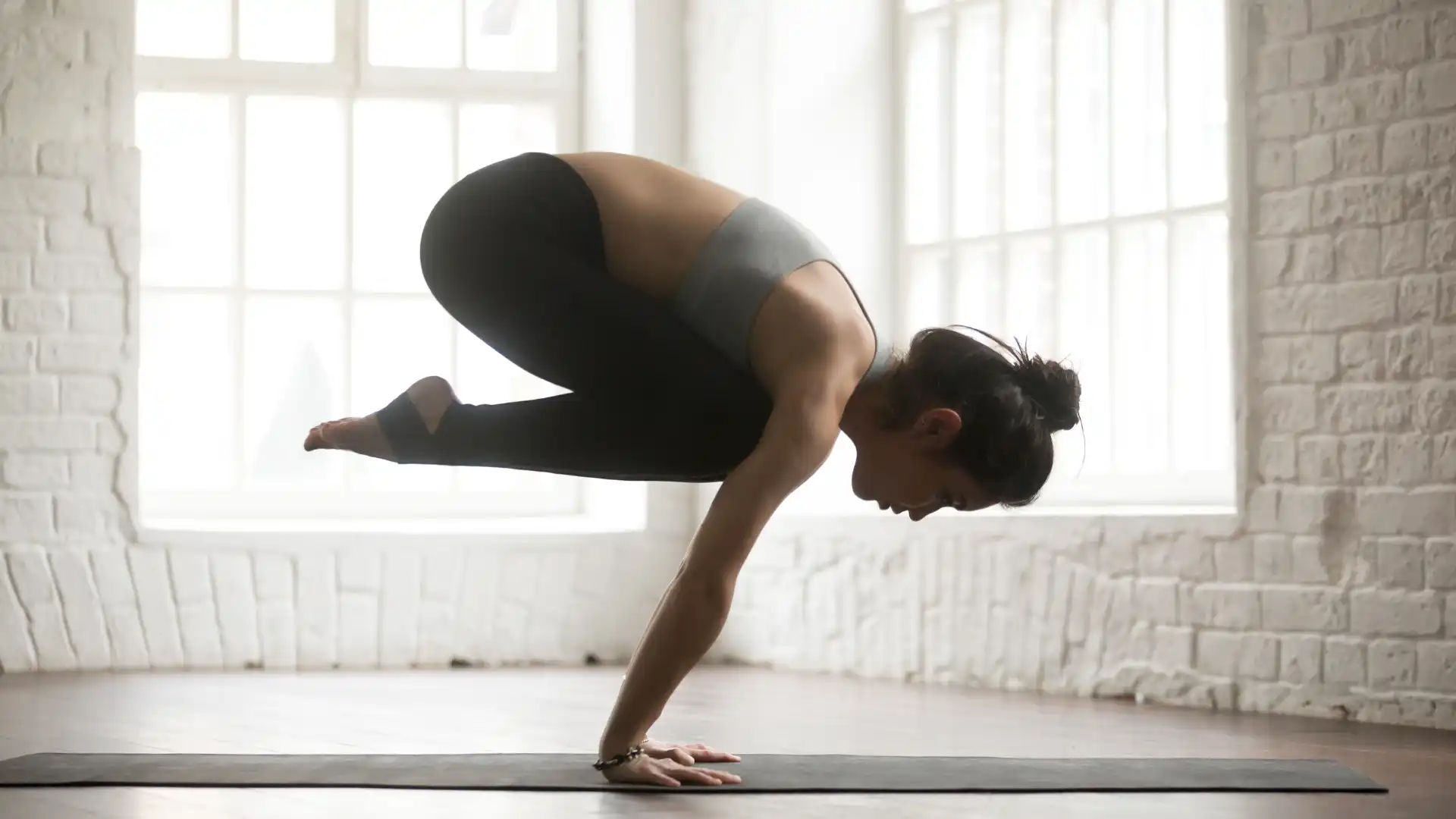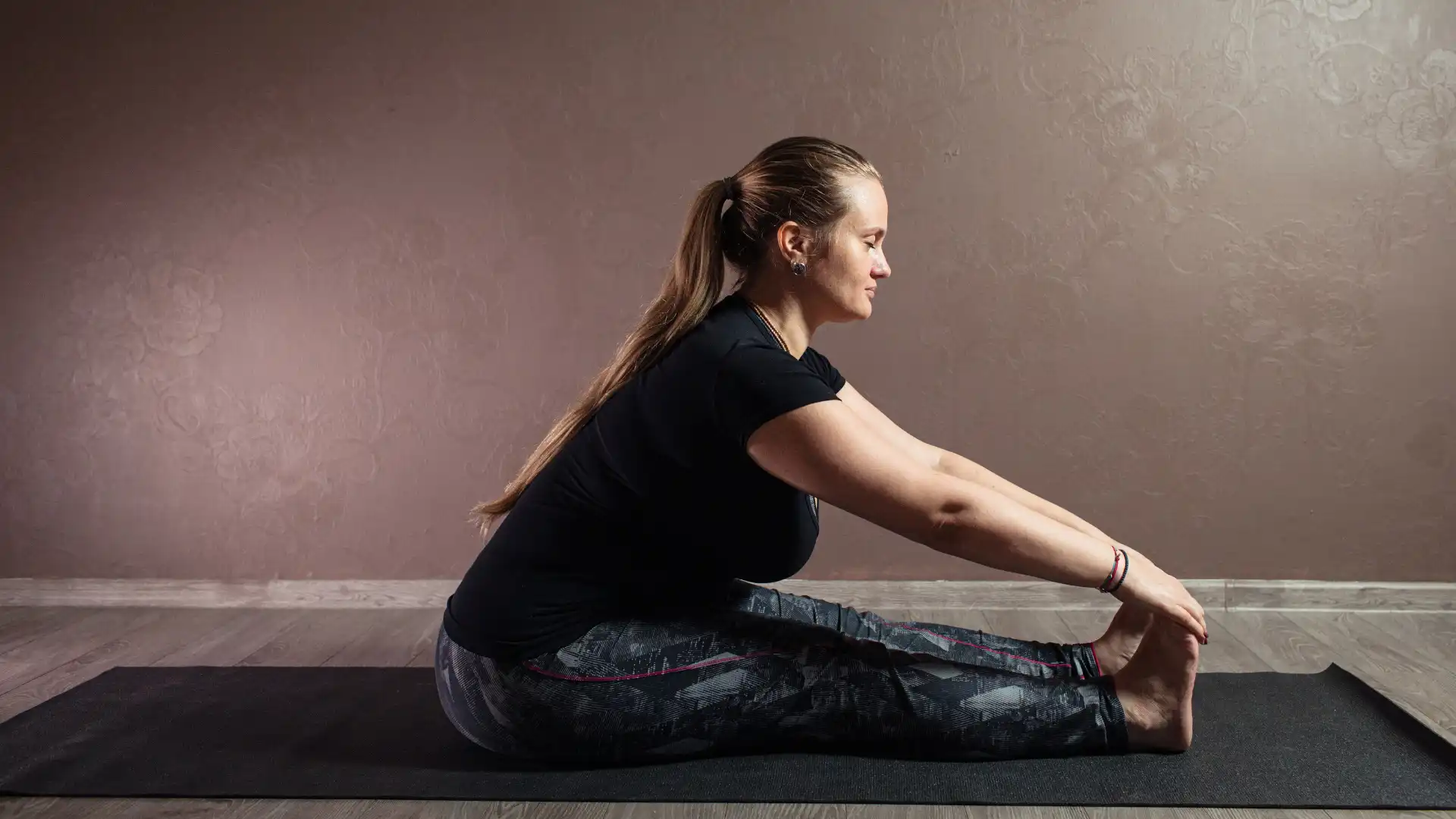Rounding the Spine in Yoga: Why Spinal Flexion Isn’t Necessarily a Bad Thing

Just like in life, we tend to favor certain things over others in yoga. We favor particular movements, particular patterns, and particular shapes.
But sometimes, we demonize things that don’t fit into our favoritism mold. Spinal flexion has become one of these demonized movements.
But what’s so wrong with spinal flexion? Let’s examine this deeper to understand whether or not spinal flexion is something that we actually do want to incorporate into our yoga practice.
What Is Spinal Flexion?
Spinal flexion is the anatomical description of rounding the spine forward, such as in forward folds.
In the yoga world, we often hear cautionary tales about how dangerous spinal flexion can be. I’ve even heard teachers warn that rounding the spine at all can cause spinal discs to herniate.
We’re often taught to “hinge from the hips” or “elongate the spine” when folding forward to avoid any rounding action in the back body. And while these cues can be helpful and useful at times, they’re not the only way that forward folds can be practiced safely and effectively. Sometimes, rounding the spine can actually be quite beneficial.
I find this interesting because we actively encourage a rounded spine in postures like Marjaryasana (Cat Pose) and Bakasana (Crow Pose). So why, then, do we so strongly discourage a rounded spine in forward folds or other types of asana? Let’s examine the spine further to try to understand.
What Are the Movements of the Spine?
The human spine is extremely complex and wonderfully adapted to allow us to be bipeds. In normal, healthy spines, the ingenious design of the bones, muscles, and connective tissues allows our bodies to absorb shock and stress as we move about in the world—and this also includes our movement during yoga practices.
The human spine is naturally designed to move in six directions. It allows for:
- Flexion (forward folding)
- Extension (backbending)
- Lateral flexion to the right (side bending)
- Lateral flexion to the left (side bending)
- Rotation to the right (twisting)
- Rotation to the left (twisting)
All of these movements of the spine are natural, normal, and healthy. And beyond this, to keep the spine natural, normal, and healthy, it is advised to utilize all of these movements. As with most things in our bodies, the six movements of the spine are a “use it or lose it” scenario.
So Why Has Spinal Flexion Gotten Such a Bad Rap in Yoga?

The key to what we’re discussing here is normality. Not all spines are created equal and not all spines have received the same degree of stress and/or injury in their lifetimes.
For some injuries and conditions, spinal flexion may be contraindicated. And I believe this has perpetuated throughout the yoga world to make many yoga teachers believe that because spinal flexion is not advised for some parts of the population, that means it is not advised for all. However, this could not be further from the truth.
Spinal flexion is a healthy and normal movement for the spine and it should be practiced as a healthy and normal movement rather than demonized as something “dangerous” or “incorrect.”
(Of course, if you are someone that actually does have a spinal pathology, then definitely seek medical advice before practicing any spinal movements.)
However, if you have a normal and healthy spine, then it is advisable to use your spine in its complete and natural range of motion—including its ability to round forward.
Another reason that spinal flexion may be viewed as negative by many yoga teachers is because of our modern lifestyles. Many of us spend increasing amounts of time sitting hunched over in a chair staring at a screen in prolonged spinal flexion. And this can lead to a plethora of problems. However, it is important to note that any movement practiced excessively can lead to problems.
Furthermore, sitting in a hunched position is passive. Some practices of yoga (such as Yin) utilize passive, long holds to apply mild stress to joints and to elongate connective tissues (notably fascia). But we can also practice active spinal flexion in more dynamic styles of yoga to strengthen our spinal flexor muscles, which need just as much love and affection as our spinal extensors.
Who Should Avoid Spinal Flexion?
As noted, there are certain cases and populations that actually should avoid spinal flexion in order to keep their own individual spinal health.
Those with osteoporosis should use caution when practicing any form of physical exercise, including yoga. Because the bones are already brittle and weak, spinal flexion may exacerbate this preexisting condition, so it is best to speak with a professional before rounding the spine.
For those who already have a posterior pelvic tilt, flexion of the lower back in forward folds may put excessive pressure on the intervertebral discs. So, sometimes, a student simply needs to learn how to manipulate the musculature surrounding their pelvis to be able to change its tilt. Sometimes, though, this pelvic tilt could be due to restrictions beyond their immediate control. In this case, it would likely be wiser for them to bend their knees in a forward fold and maintain as much spinal neutrality as possible.
It’s also important to factor in the amount of time you intend to hold a posture for. In Yin Yoga, spinal flexion is encouraged 100% of the time in forward folds, however, props are used to support body weight so that stretch and creep will be maximized at a certain point (due to the force of gravity pushing down on your body). If you’re planning to hold a forward fold for an extended period of time without any support from props, then it would likely be wise to strive for spinal neutrality.
Also, age and physical condition affect everything that we do physically. So, of course, exercise caution if you feel that it is warranted when you practice.
Don’t be afraid to explore your limits. Just know when and how to appropriately “listen” to what your body tells you.

So Should You Round Your Back in Yoga or Not?
Of course, I’m not suggesting that you change all of your practice to include a rounded spine. There is nothing wrong with an elongated spine in asana either. All movements of the spine are useful and valuable to your practice and your spinal health in general. So utilize your range of motion in all directions!
There is no one right or wrong way to practice forward folds or any other pose for that matter. Each varying style of practice simply offers different benefits.
In general, spinal flexion isn’t a bad or dangerous movement for the spine. And it deserves its place in our yoga practice.
Just as we move other joints of the body in different directions with asana, it is also wise to move the joints of our spines in different directions.
Instead of demonizing this innate movement of the body, it might be wiser for us to learn to find the balance between all things—the way we sit at work, the way we practice our physical asanas, and the way we view the inherent movements of our bodies. After all, isn’t yoga all about finding balance anyway?
Also, read...
Teaching Svadhyaya: 3 Ways to Encourage Self-Study in Yoga
In Celebration of Gray-Haired Yoga – Busting the Myth of the Yoga Body
Related courses

Leah Sugerman is a yoga teacher, writer, and passionate world traveler. An eternally grateful student, she has trained in countless schools and traditions of the practice. She teaches a fusion of the styles she has studied with a strong emphasis on breath, alignment, and anatomical integrity. Leah teaches workshops, retreats, and trainings, both internationally and online. For more information, visit www.leahsugerman.com.




